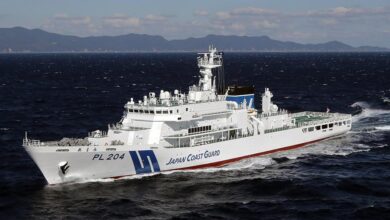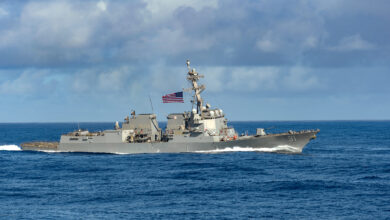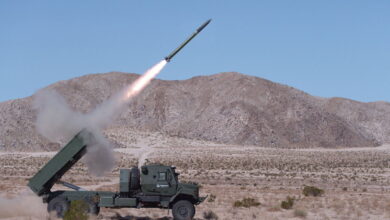Japan Weighs Ships for Aegis Missile Defense System
Japan plans to upgrade the range of ground-to-ship guided missiles, allowing them to target threats from further distances.
Japan will build two ships equipped with Aegis missile interceptors after public opposition forced the government to scrap deployment of a costly land-based system, the country’s defense minister said Wednesday.
Earlier this year, Japan decided to suspend unpopular plans to deploy the US-developed Aegis Ashore defense system in northeastern Akita and western Yamaguchi prefectures amid technical problems and swelling costs.
As an alternative, Defense Minister Nobuo Kishi told a ruling party meeting, the government hopes “to build two vessels equipped with the Aegis system.”
Officials aim to win cabinet approval as early as next week, public broadcaster NHK reported.
The prime minister’s top spokesman Katsunobu Kato later said that the proposal “is aimed at establishing a system of defending the whole of Japan continuously with a ballistic missile defense system.”
The Aegis Ashore purchase was approved in 2017, at an estimated cost of $4.2 billion over three decades. It is not immediately clear what the cost of a deployed system on ships will be.

The system’s purchase was seen both as part of attempts by Tokyo to bolster its defensive capabilities after successive North Korean missile launches but also as a way to foster closer ties with Washington under US President Donald Trump, who pushed allies to buy more American military equipment.
But Aegis has long been controversial in Japan, with opposition stemming not only from its expense but also from locals concerned about the risks posed by a missile defense system in their backyard.
Kishi also on Wednesday announced that the ministry plans to upgrade the range of ground-to-ship guided missiles, allowing them to target threats from further distances.
“This upgrading is aimed at strengthening defense capability, but not aimed at obtaining a capacity to attack enemy territory,” spokesman Kato said.
The distinction is key in Japan, whose pacifist post-war constitution strictly limits the country’s military to self-defense, leaving it heavily dependent on the United States for security.
In September, outgoing prime minister Shinzo Abe urged the country to strengthen its ballistic missile defenses, warning that interception systems like Aegis alone may be insufficient.
But the prospect of obtaining a longer-range strike capacity is highly controversial, with a key ruling coalition political party firmly opposed.












